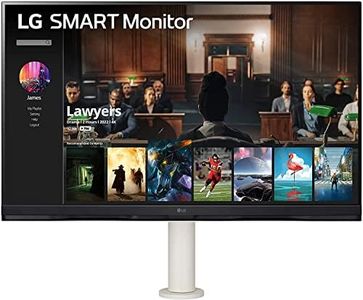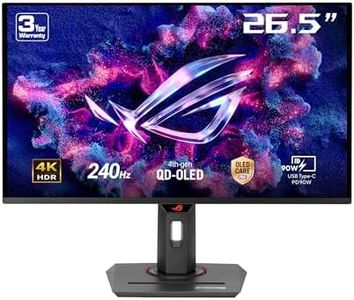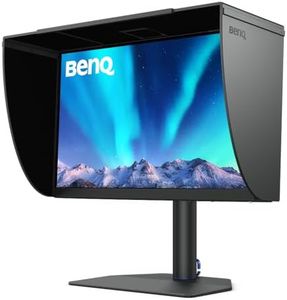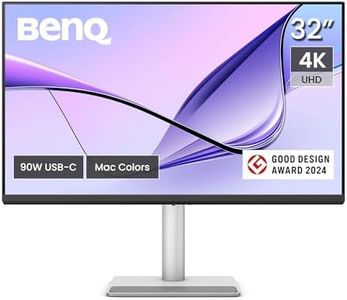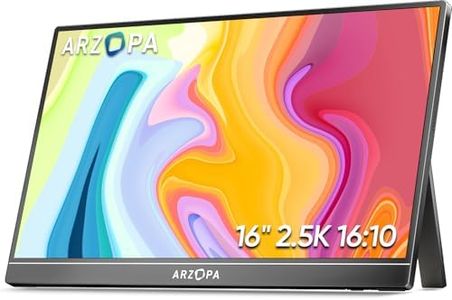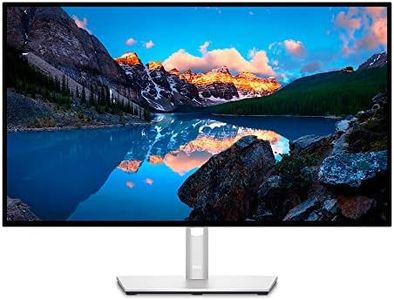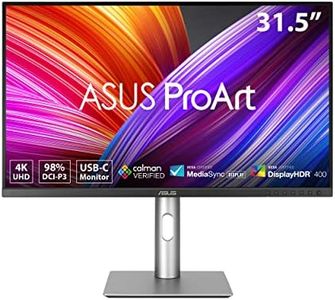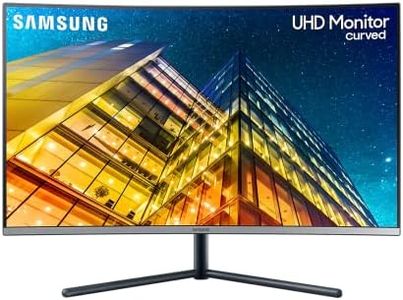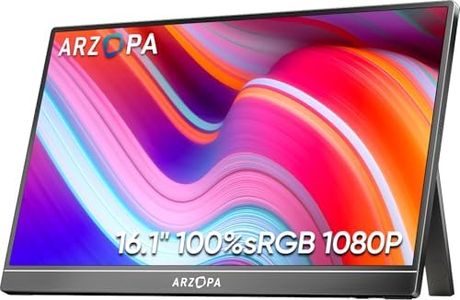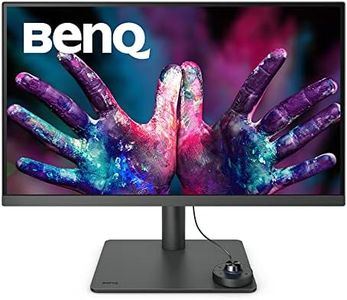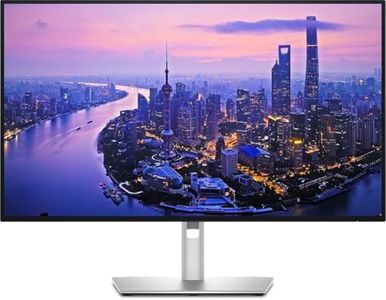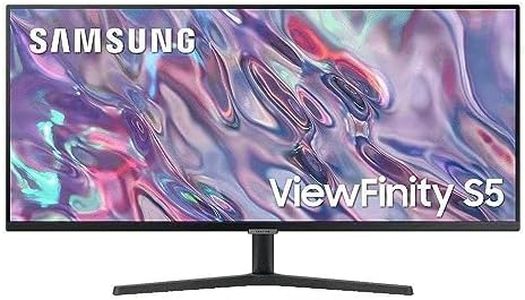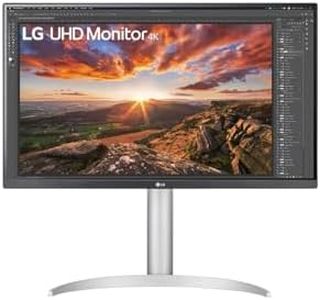We Use CookiesWe use cookies to enhance the security, performance,
functionality and for analytical and promotional activities. By continuing to browse this site you
are agreeing to our privacy policy
10 Best Photo Editing Monitors
From leading brands and best sellers available on the web.Buying Guide for the Best Photo Editing Monitors
Choosing a monitor for photo editing is all about making sure your images look accurate and vibrant, just like you intended. The most important thing to remember is that your monitor should display colors, brightness, and details as faithfully as possible. When comparing monitors, look at specifications that affect color quality, screen clarity, and your comfort when working for long periods. Remember, your workflow, environment, and the types of photos you edit (such as for web, print, or professional work) should guide your choice.Panel TypeThe panel type determines how colors and images appear on your monitor. The main types are IPS, VA, and TN. IPS panels are best for photo editing because they offer wide viewing angles and excellent color accuracy, meaning colors look correct even when you view the screen from the side. VA panels have better contrast but less color accuracy, while TN panels are fast but don’t show colors as well. For photo editing, always look for an IPS panel to ensure your images look true to life.
Color Gamut and AccuracyColor gamut refers to how many colors a monitor can display, and color accuracy is about how true those colors are. Monitors advertise their coverage of color spaces like sRGB, AdobeRGB, and DCI-P3. sRGB is fine for online images, but for printing or professional use, aim for high AdobeRGB or DCI-P3 coverage. Typically, a good photo editing monitor covers at least 99% sRGB and a high percentage of AdobeRGB or DCI-P3. If your work is mainly for screens, sRGB is enough, but for print, high AdobeRGB is better to ensure colors print as expected.
ResolutionResolution is how many pixels the monitor displays, usually listed as Full HD, QHD, or 4K. Higher resolution means a sharper image and more workspace for your editing tools. Full HD (1920x1080) is the minimum, but QHD (2560x1440) or 4K (3840x2160) is much better because it shows more detail and allows for easier multitasking. Pick a resolution that matches your computer’s power and desk space; photo editors benefit from higher resolutions for clearer images and more precise edits.
Screen SizeScreen size affects how comfortable and immersive your editing experience is. Most photo editors choose monitors between 24 and 32 inches. Smaller screens are easier to fit on desks but show less detail, while larger screens make fine details easier to spot but need more space. Consider your desk size and how far you sit from the screen. If you often work with detailed images or multitask, a larger size helps, but make sure it doesn’t overwhelm your workspace.
Uniformity and CalibrationUniformity means that the brightness and color are consistent from edge to edge. This is important so your photos don’t look different when moved around the screen. Monitors with good factory calibration or built-in calibration tools make editing more reliable. Read reviews or look for monitors tested for uniformity, especially if you edit for print or professional projects. Calibration tools help maintain color accuracy over time, so consider how you’ll recalibrate as you use the monitor.
Matte vs. Glossy ScreenMatte screens reduce reflections and glare from lights or windows, which makes it easier to edit for long periods without distractions. Glossy screens can make colors and contrast pop, but they reflect light more, which can be distracting or misleading for photo work. If your editing space has a lot of light or windows, matte is usually the safer choice to avoid unwanted reflections affecting your color judgment.
ConnectivityConnectivity means what ports the monitor has to connect to your computer, such as HDMI, DisplayPort, or USB-C. Some modern monitors also support charging laptops through one cable. Make sure any monitor you choose has the ports that match your computer and enough options for any extra devices. If you want a clean desk setup or use multiple devices, look for monitors with good connectivity options to keep compatibility simple.

